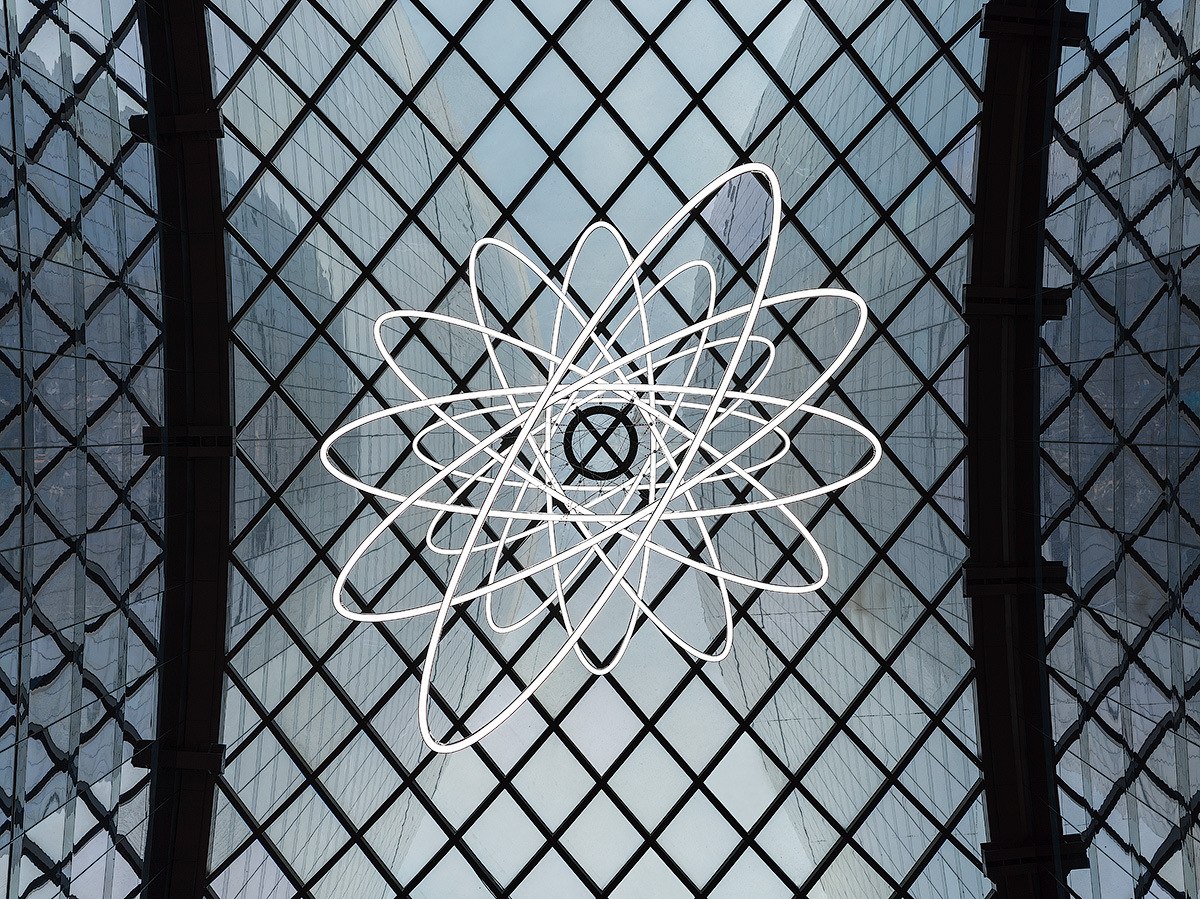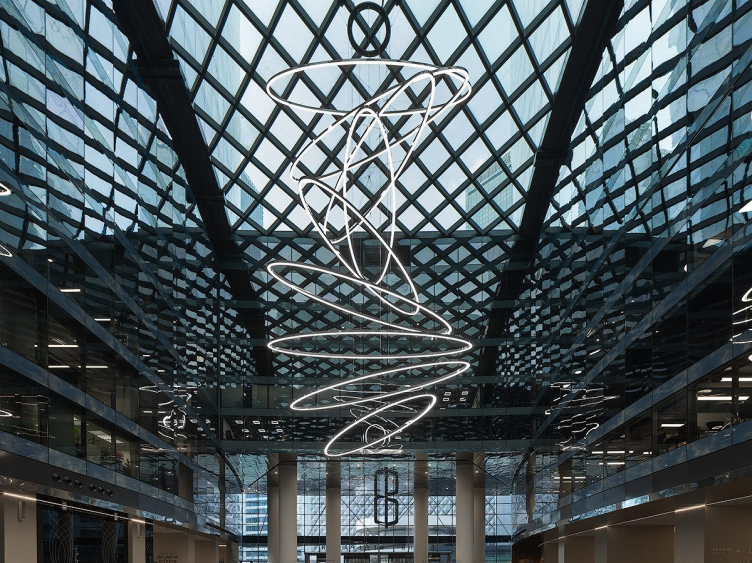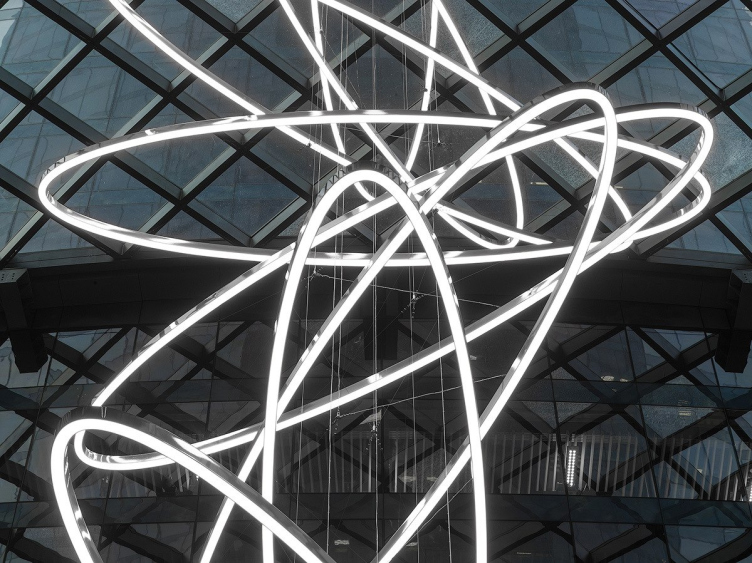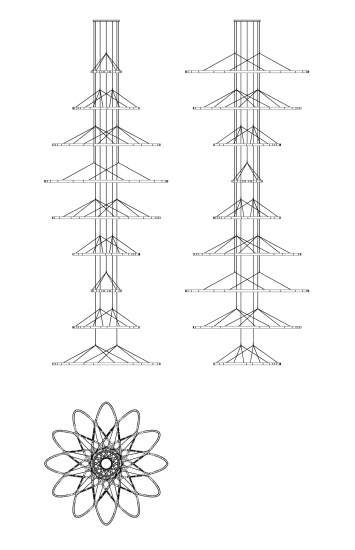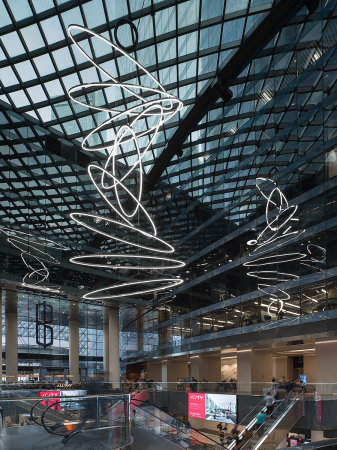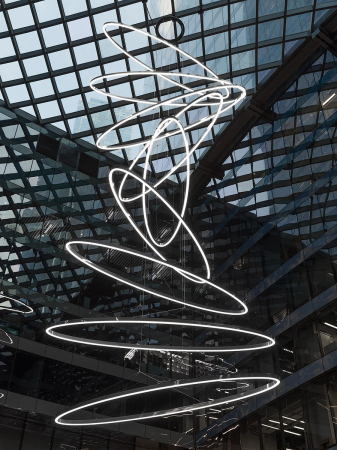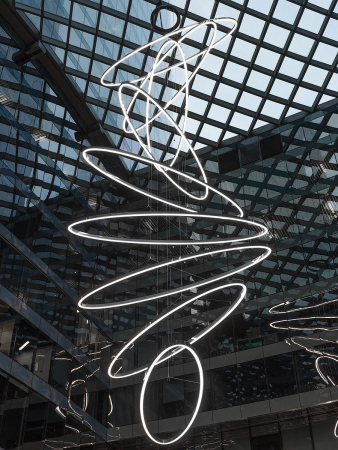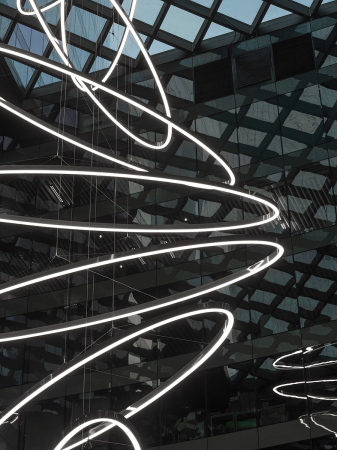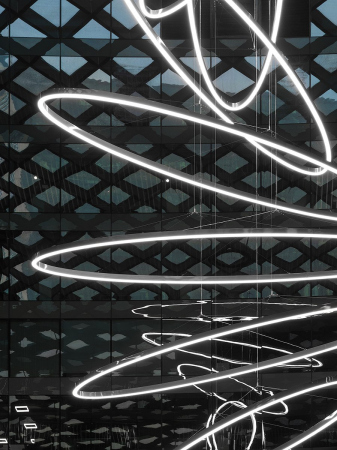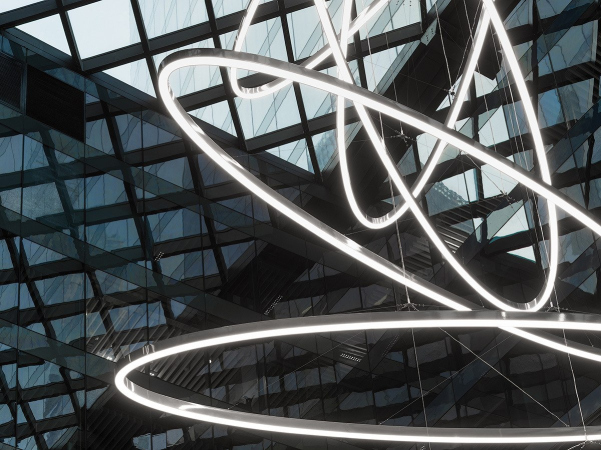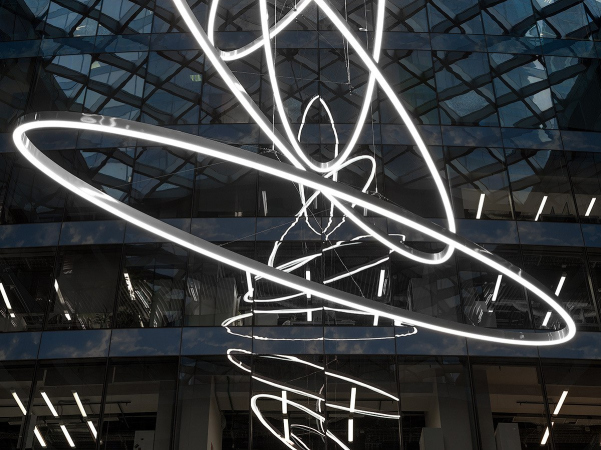Photograph © Dmitry Chebanenko
Copyright: Photograph © Dmitry Chebanenko
The atrium is 9 floors high from the ground level (out of those, the first one is public and there are two technical floors) plus three underground levels. In the central part, all of them, underground and above-ground, are united by a single vertical space about 40 meters high.
The new object accentuates the central axis of the atrium, attracting the attention of the passers-by and inviting to lift your gaze – thus making the structure of the space of the main hall as clear as it gets, and pretty upbeat at the same time.
Photograph © Dmitry Chebanenko
Copyright: Photograph © Dmitry Chebanenko
Typologically, the object can be traced back to the sculptural chandeliers of the multi-height foyers of the modernist public buildings of the 1960’s and 1970’s, yet the rings (ellipses, in fact) use the cold white LED light, and, in addition, they are completely identical: 2 x 8.1 each, and they hover at an equal distance of 2.4 meters from one another, consecutively turning by 30 degrees in each iteration. And, in spite of the fact that the lights look as though they were turned at different angles in respect to the ground, all of them are strictly parallel, and are situated within one plane.
In total, there are 9 rings; the total height of the installation is 19 meters, it weighs one ton, the distance from the zero elevation mark is 9 meters.
Thus, the volumetric composition is based upon a paradox between strict mathematical precision and repetition, which in direct projection yield a simple, yet beautiful fractal – and the asymmetry and unpredictability of the viewing angles, which appear once you look at the object in reality and get multiplied in the surrounding stained glass windows.
The produced effect is asking to be compared with how mathematical or physics rules are reflected in everyday life: based upon simple and clear formulas, they, being projected on an endless diversity of circumstances and perceptions, they yield a multitude of alive and seemingly chaotic pictures. And this is, in my opinion, the reason why the object designed by Andrey Perlich is interesting and attractive – no matter how many times you pass around it, you will always see something different, yet based upon strict geometry.
One more thing. Each ellipse is suspended on two slender wires. But it seems as though the rings are hanging in space not so much because of the wires as due to some gravitational phenomenon: they are attracted by the central axis, and just as much – by the above-described logic of the “divine” order.

